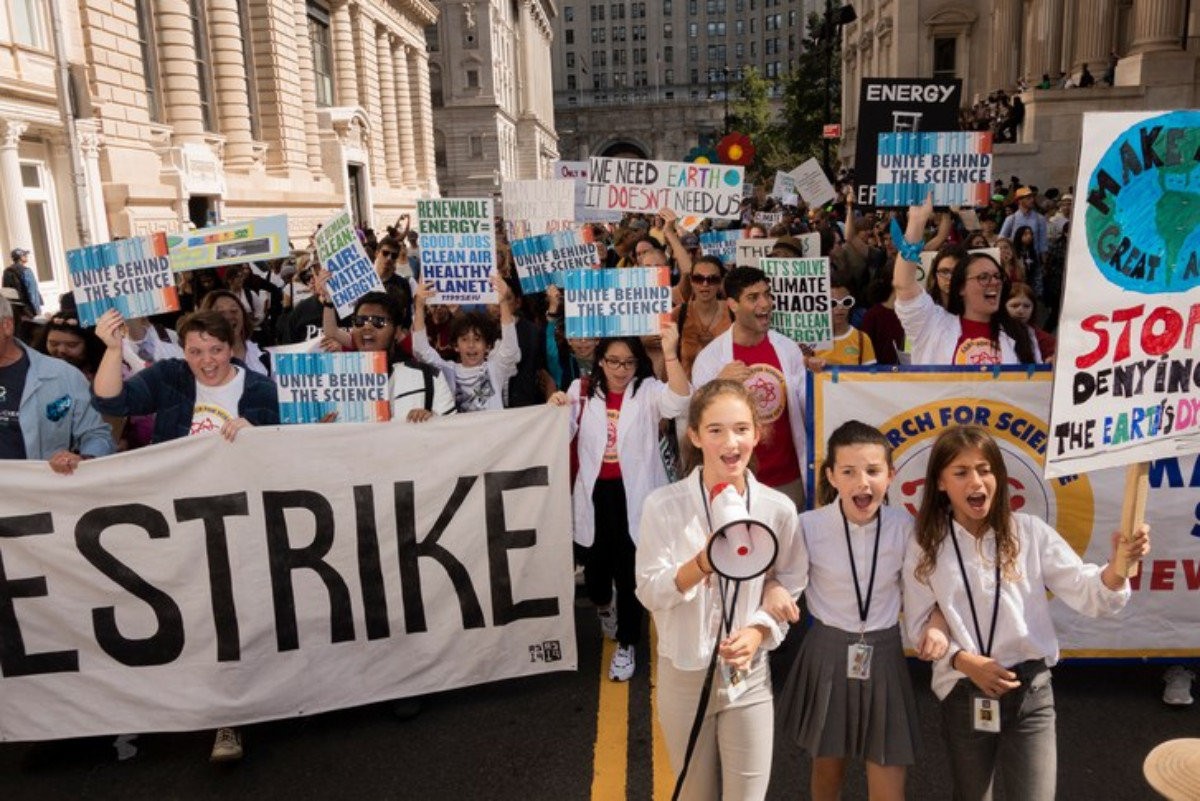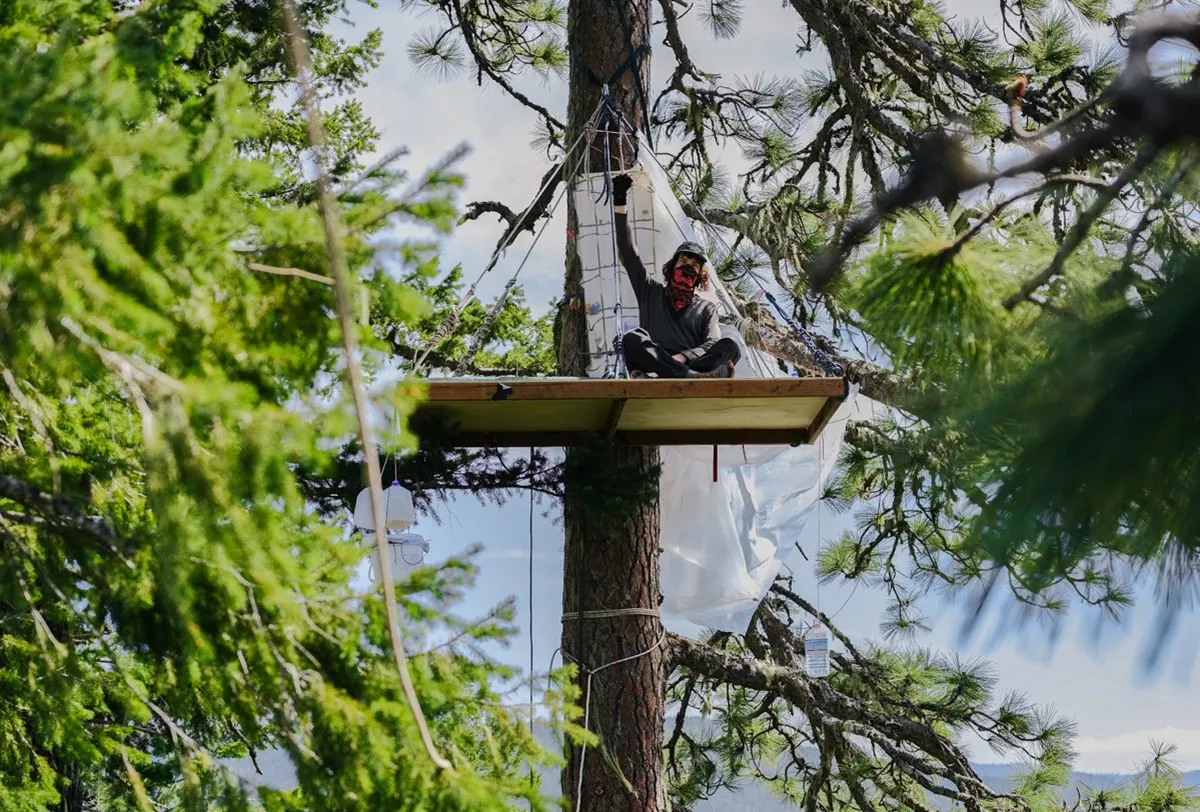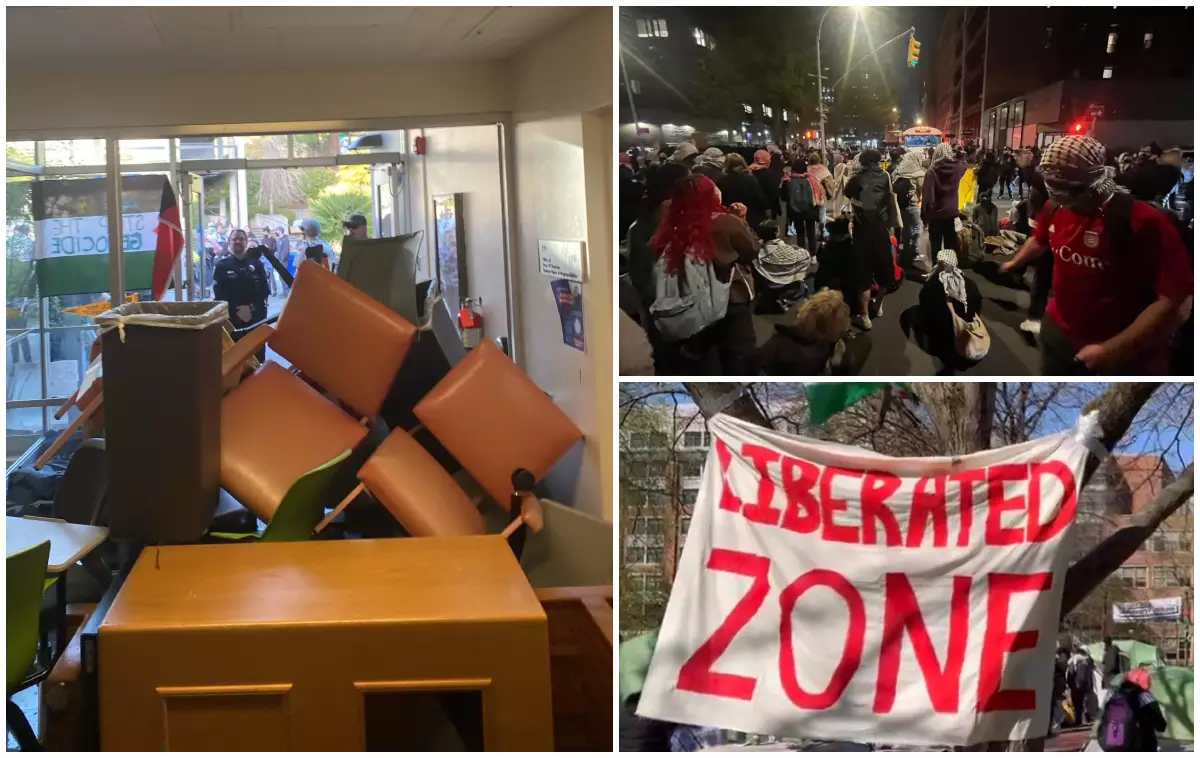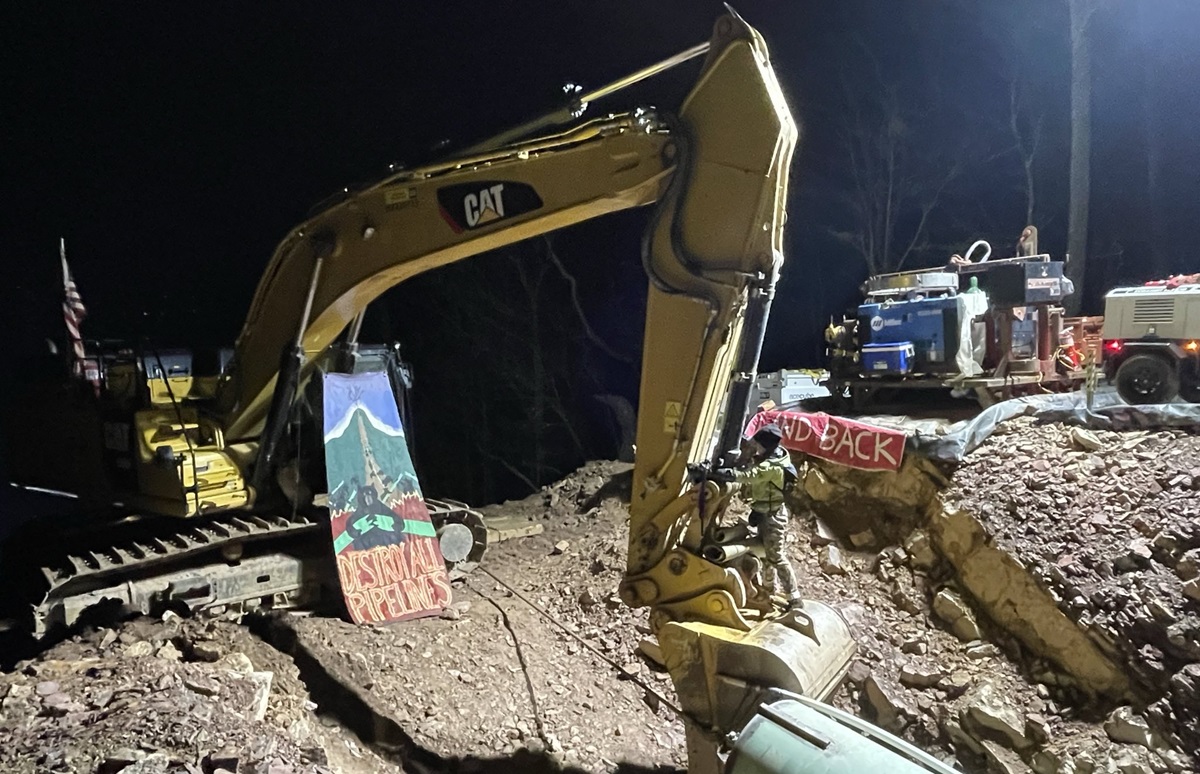Filed under: Action, Climate Change, Northeast

Report from the mass #ClimateStrike mobilization and student walkouts in Manhattan, New York.
The day was hot and jubilant. When I arrived at Foley Square in Lower Manhattan, the crowd had just begun to gather. Within the hour there was no room left to move, but streams of raucous students were still pouring in from every direction. Roars rippled through the growing crowd and echoed off the stone facades of the city’s municipal buildings. When you’re in the middle of a crowd, it can be nearly impossible to judge the size. But one thing was clear: this was far, far bigger than anyone had anticipated.
By the time the march left the park to snake its way past City Hall, the crowd had swelled to an estimated 300,000. The astonishing scene in New York was repeated around the world. Over four million people worldwide joined the Youth Climate Strike, making it the largest climate protest in history. New York, San Francisco, Berlin, Stockholm, London, Paris, Tokyo, Melbourne, Bangkok, New Delhi, Dhaka, Nairobi, Istanbul, Rio de Janeiro, Santiago, Islamabad, Kabul – the list goes on. According to 350.org, there were nearly 6000 strikes total, in 163 countries, on all 7 continents, with over 1100 strikes in the US alone.
NYCs massive #ClimateStrike march has begun, from Foley Sq down Centre St to Chambers St across to Broadway… and down to the Battery! Thank you @ClimateCrisis and everyone else marching! pic.twitter.com/WUpeRP0ZQS
— Gale A. Brewer (@galeabrewer) September 20, 2019
The mood in New York was festive, energetic in the way that only large demonstrations can be. Rowdy kids, laughter and chanting, shouting and drumming, the press of bodies and the infectious sensations of an assembled crowd. I should say I have never witnessed a protest more diverse or more intergenerational, and of course skewing younger overall. Parents with their toddlers, elementary school kids with their whole class, high school kids goofing off, sincerely-engaged college students. It was a day called by and called for young people: they organized the strike, they led the marches, they spoke at the rally, they led the charge. Mayor de Blasio had made headlines earlier in the week by endorsing the strike and giving public school students permission to cut class. Some might see this as evidence of his progressive side. I prefer to see it as an admission that politicians don’t have the situation fully under control. Better to allow what you can’t stop!
The generational aspect of the new climate movements was everywhere in abundance on Friday. It’s the young who most acutely experience the uncertainty of the present, as the nihilist clique in power has bequeathed them with a planetary catastrophe that will define every contour of their lives. Newly mobilized youth experience this fact with acuteness and clarity. If the Climate Strike was any indication, the sentiment has been rapidly transformed into a shared perception of a generation. It’s not quite resentment they feel; it’s betrayal. What about us? read one blunt sign I saw carried by a teenager. How the pervasive sense of being sacrificed manifests itself will be a deciding factor in the evolution of the emergent movement.
To be young is to be a jumble of emotions, none of them easily resolved. Sometimes our difficulties can give rise to uncontrollable laughter, certain situations comic as only the absurd can be. The kids wear complex feelings with style, with a natural flourish and a large dose of comedy. I was continually struck by how funny the strike was – the way people acted in public when they were liberated from their usual routines, the creative slogans they chanted, the hilarious signs they carried, their nonchalant attitude about being yelled at by the police for blocking an intersection. Laughter zigzagged through the crowd all day. It’s part teenager, part prankster, part internet culture. It’s 2019. Protest signs are memes and memes are protest signs. This is not fine, deadpans the cartoon dog in a house on fire. I speak for the trees, a hand-painted Lorax declares, and the trees say FUCK YOU! Pop culture is being reclaimed as a subversive tool to not only lampoon the ruling class but unite people in generational self-identification.
The #ClimateStrike view from our office. pic.twitter.com/5kd6D8wdxB
— Katie (@RDlenix) September 20, 2019
But everything at the Climate Strike also had a dark edge, even the humor. Beneath the day’s festivities was a streak of half-spoken grief. As a friend pointed out, the day’s celebratory mood was the flipside of the anxiety young people have been experiencing as they absorb a daily onslaught of horrific news about the state of the world. I’m convinced that this subjective attunement is one of the new climate movement’s greatest strengths. What does it feel like to slide towards an uncertain future, to be alive on a dying planet? What does it mean to come of age at the end of the world? There were hints of fear crackling across people’s otherwise happy faces. More than once I heard rage catch in a throat mid-chant. There were Extinction Rebellion’s ubiquitous hourglass symbols. Then there were the countless signs bearing messages approaching the apocalyptic. Global Warming = Global Mourning. The 6th Mass Extinction is here. Together we burn. Save the fucking world. If the day was a display of collective power, so too was it an outpouring of collective sadness. Don’t let Gen Z be the end, scrawled in red, black, and green.
The dark undercurrent of the Climate Strike parallels a broader shift in climate rhetoric in recent years. At the People’s Climate March in 2014, it was common enough to find sparks of hope, a shared belief that the world was finally on the verge of righting its dangerous course. Only lunatics spoke of extinction. Five years later, the enormity and severity of the crisis seems to have become much more clear – and to a much broader set of people. Discourse around climate change is no longer about “the environment,” going green, or eco-whatever. Now it’s crisis, collapse, breakdown. There is an urgency that simply wasn’t there a few years ago. Declare climate emergency. The future will be green or not at all. #NoEarthNoFuture. It strikes me that the new climate movements are both benefiting from this general realization and are pushing the discursive shift even further, intensifying the rhetoric (“11 years left!”) just as the pace of climate change itself accelerates.
“For now, too many linger in the untenable space between believing elites have utterly failed to act while holding out hope that they might still act.”
After a triumphant procession down Broadway, passing Zuccotti Park and Wall Street (“Fuck Wall Street! Fuck Wall Street!”), the march slowly entered its destination: Battery Park. Once inside, the crowd spread out and took over the grounds like it was a music festival. At some point the cops intervened and temporarily closed access to the park. It was simply too full, they said. Within the zip-tied barricades, I found students sprawled out on the grass with their classmates, trying to escape the surprisingly hot late-summer sun. Teenagers joked and danced. Benches were filled with the elderly catching their breath and holding signs of support. The usual leftist organizations were present, too, passing out the usual flyers. It didn’t seem to me that many of the younger protestors were that interested in what old-school activists had to say.
On stage, musicians and poets performed. Climate activists from around the city and the world – all of them young women – spoke about their experiences and the recent explosion of the new climate movements. The language used was sensitive, inclusive, focused on climate justice, indigenous resistance, and frontline communities. The enthusiastic response from the crowd seemed to demonstrate that many young activists were plenty familiar with the lingo, perhaps more aware of the disparities of power, privilege, and protest than earlier climate mobilizations. We heard from teen organizers within the Climate Strike as well as from new youth-led groups like the Sunrise Movement and Zero Hour. Striking nurses spoke to the effects of climate change on global health. Teenagers spoke of indigenous defense of the Amazon, of the toll of Hurricane Maria in Puerto Rico (making landfall two years ago to the day), of the rising seas swallowing Bangladesh even as they spoke.
Spending all afternoon in a park listening to speeches, however inspiring they might be, is an exhausting experience. Others around me seemed to have their attention waver like mine did. Part of me began to fear that we had traded the militant joy of taking the streets for the collective boredom of simply standing in a crowd, as so often happens at demonstrations. But just like everyone else, I was determined to stick it out to see Greta. The Swedish 16 year old is a true global sensation, an icon of recently mobilized youth and de facto figurehead of the new climate movements. Having come to the US for next week’s UN Climate Action Summit, her presence alone was surely a huge boost in the crowd numbers. It was hard not be curious what she would say.
Over 4 million on #ClimateStrike today. In 163 countries. And counting…
If you belong to the small number of people who feel threatened by us, then we we have some very bad news for you:
This is just the beginning. Change is coming – like it or not. #FridaysForFuture pic.twitter.com/MHGRNx1tnH— Greta Thunberg (@GretaThunberg) September 21, 2019
Greta was captivating in her way, if a bit terse. “We are doing this,” she declared to the crowd, “to wake the leaders up. We are doing this to get them to act.” She detailed the “empty promises, “lies,” and “inaction” of the countless global leaders she has met since she kicked off her School Strike for Climate more than a year ago. Turning her attention to the UN, she asked “Do you think they hear us?” A resounding No! from the crowd. “We will make them hear us!” she declared with a hint of a smile.
It was powerful stuff, moving even. But it was also vague. The fault is not Greta’s – it’s something the new climate movements are obviously grappling with. Amid the general enthusiasm of the Climate Strike, I found a kind of disempowering vagueness sometimes hovered over it. Amazingly, people had turned out by the hundreds of thousands – but it wasn’t exactly clear what our strike meant in a broader sense, what new path we were about to embark upon together as a movement, though everyone spoke of it as just that. It wasn’t even clear what being heard by “our leaders” would entail, nor what the much-demanded “action” on climate change would look like. The day’s most popular chant – “Hey hey, ho ho, climate change has got to go!” – was emblematic in its hazy confusion on what needs to be done and who needs to do it. For now, too many linger in the untenable space between believing elites have utterly failed to act while holding out hope that they might still act.
Despite this lack of strategic clarity so far, I wager that Friday’s tremendous showing cemented the recent climate mobilizations as an embryonic social movement that isn’t going to disappear anytime soon. With the success of the Climate Strike, they may have just found their popular footing, an initial consistency, an elementary composition. It’s still unclear if, and how, they will break free from the liberal democratic horizon in which they have so far articulated their demands. Perhaps the affinities built through continued Friday strikes, combined with the kinds of mass disruptive actions that are in the works, will point a way forward that doesn’t end in purely electoral or legislative “solutions” to climate change. The next step seems to be to evolve from a show of numbers to a show of force.
Greta, for her part, closed her speech by warning her enemies that “change is coming whether they like it or not.” Given yesterday’s turn-out, I believe her. The question is whether the change the new climate movements bring is change enough. The coming months and years will render the verdict on this point. Either the young will indeed be sacrificed at the hands of the rich, or their combustible mix of despair and rage will break open new worlds. Let’s help them see the task through.





